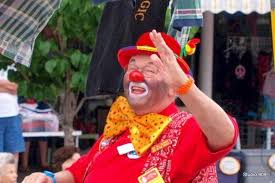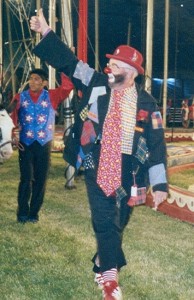Clowning Around
Balloon animals to knives, is the transition truly as prevalent as it seems?

Stereotypes can kill. No, this is not your 7th grade health article talking about the stereotypes of high school, this is truly a case of a media projected stereotype gone wrong. Clowns, we all know them, through chilling movies, birthday parties as a child, and a primary image we associate with the word “circus”, are getting a bad rep. The true beginning of this clown phobia was when the film He Who Gets Slapped was released in 1924.
It started off pretty harmless. A little spook when someone went to a circus or one was shown in a movie, but nothing more. As more and more sinister clown movies were released, especially Stephen King’s It, the fear grew into a phobia and spread like the plague. Flashing forward to 2016, a reported lure and murder performed by men in clown costumes occurred in Winston-Salem, North Carolina. Then the clown hysteria truly took off. People all around the country began to be seen in clown costumes walking on along side gravel roads, trails, and corn fields. Naturally, people took to social media and started to post disturbing videos of spotted clowns, and clowns chasing them. When this began, it couldn’t be stopped, and pretty soon it was hard to tell if the stories, sightings, and chases were real or fake.
Clowns became the talk of the century, tweets, posts, gossip, everything and everyone was talking about the out of control clown epidemic. One of those people was Sarah Hamed ’20 and her friends. They agreed that they are petrified of the characters and their proposed actions. When asked about her response to seeing one of these “killer clowns” she said, “You would no longer know me as Sarah Hamed, I would become Usain Bolt.” She understands, though, that real clowns aren’t supposed to be scary, and that they are not at all terrible people. Although after scrolling through her Twitter feed and looking at some frightening clown sighting posts, she can say that, “Some of them are just crazy, like Popeyes running out of chicken during rush hour crazy.”
On the other side of the spectrum, David McNair says that he has never been afraid of clowns. “No, nothing ever gave me the creeps, they’ve always just been clowns. No connotation,” David said. His opinion is that the situation has gotten completely out of hand, ridiculous, and dangerous. He points out that in this day and age, going around in a mask and scaring people could be potentially deadly. “We live in a society with guns. I don’t know why they’re doing this. It’s disturbing and dangerous,” David said. He agrees that clowns shouldn’t be scary, but popular movies, and the media, have given the fear legs to run.
Fear and disapproval aren’t the only emotions tied to this phenomenon. Those in the professional clown business are disgusted by those turning a symbol of joy and entertainment into horror. Gary Murphy, also known as Bandana the clown, is one of these people. After sixteen years in the clown profession, he had thought he’d seen it all. “I am very aware of the clown mania that has hit this country and I think it is ridiculous,” he said. He tries to make his audience feel comfortable and never oversteps any boundaries. “In my clowning I do not push anyone who is scared of clowns, that’s not what we are about, not at all,” he said. Many agree, they believe that clowns can bring joyous feelings and help those through hard times. Murphy has been in these situations numerous times. “A baby had died and several kids were at the funeral. The minister wondered if I would go to the home [of the deceased child] after the funeral, he checked it out and the family asked that I come. The young kids were so happy to see me and it helped the children out during a serious time. It was a great moment for me and it was greatly appreciated.” Stories like these are often left untold, leaving the rampaging wildfire of fear to spread without a second thought.
